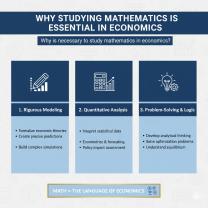What is the mark scheme for GCE mathematics statistics S2?
The GCE Mathematics Statistics S2 mark scheme provides valuable assessment guidelines for evaluating students' performance in the Statistics S2 paper. This article explores the purpose and key components of the mark scheme, offering insights into how it ensures fair and accurate grading.
Introduction to the GCE Mathematics Statistics S2 Mark Scheme
The mark scheme for the GCE Mathematics Statistics S2 paper serves as a comprehensive guide for examiners when assessing students' answers to various questions. It outlines the criteria for awarding marks, ensuring consistency and fairness in the grading process.
Purpose of the Mark Scheme
The GCE Mathematics Statistics S2 mark scheme has several essential purposes:
1. Clear Assessment Guidelines
The mark scheme provides examiners with clear and specific assessment guidelines for each question, ensuring that marking is based on predetermined criteria.
2. Consistency in Grading
By detailing the criteria for awarding marks, the mark scheme ensures that all examiners follow the same standards, leading to consistent grading across different papers and sessions.
3. Fairness and Objectivity
The mark scheme promotes fairness and objectivity in grading, as it focuses on the quality of students' responses rather than subjective interpretations.
4. Feedback for Improvement
Students can benefit from the mark scheme by reviewing their answers in light of the provided assessment criteria. This feedback helps them understand their strengths and areas for improvement.
Key Components of the Mark Scheme
The GCE Mathematics Statistics S2 mark scheme typically includes the following components:
1. Question-by-Question Breakdown
For each question in the paper, the mark scheme presents a detailed breakdown of the key points and concepts that students should address in their answers.
2. Mark Allocation
The mark scheme specifies the number of marks allocated to each part of a question, guiding examiners on how to distribute marks based on the quality of responses.
3. Exemplar Responses
In some cases, the mark scheme may include exemplar responses that demonstrate the level of detail and correctness expected for different mark allocations.
4. Common Errors and Misconceptions
The mark scheme may highlight common errors or misconceptions that students may encounter, helping examiners identify and address these issues during grading.
Benefits for Students and Teachers
Both students and teachers can benefit from the GCE Mathematics Statistics S2 mark scheme:
1. Students
Students can use the mark scheme to understand the expectations for each question, allowing them to structure their answers effectively and maximize their marks.
2. Teachers
Teachers can utilize the mark scheme as a teaching tool to help students prepare for the exam. It aids in aligning classroom instruction with assessment criteria.
Conclusion
The GCE Mathematics Statistics S2 mark scheme is an indispensable tool that ensures fairness, consistency, and objectivity in the grading process. By providing clear assessment guidelines and criteria, the mark scheme benefits both students and teachers, fostering a reliable evaluation of students' performance in the Statistics S2 paper.













